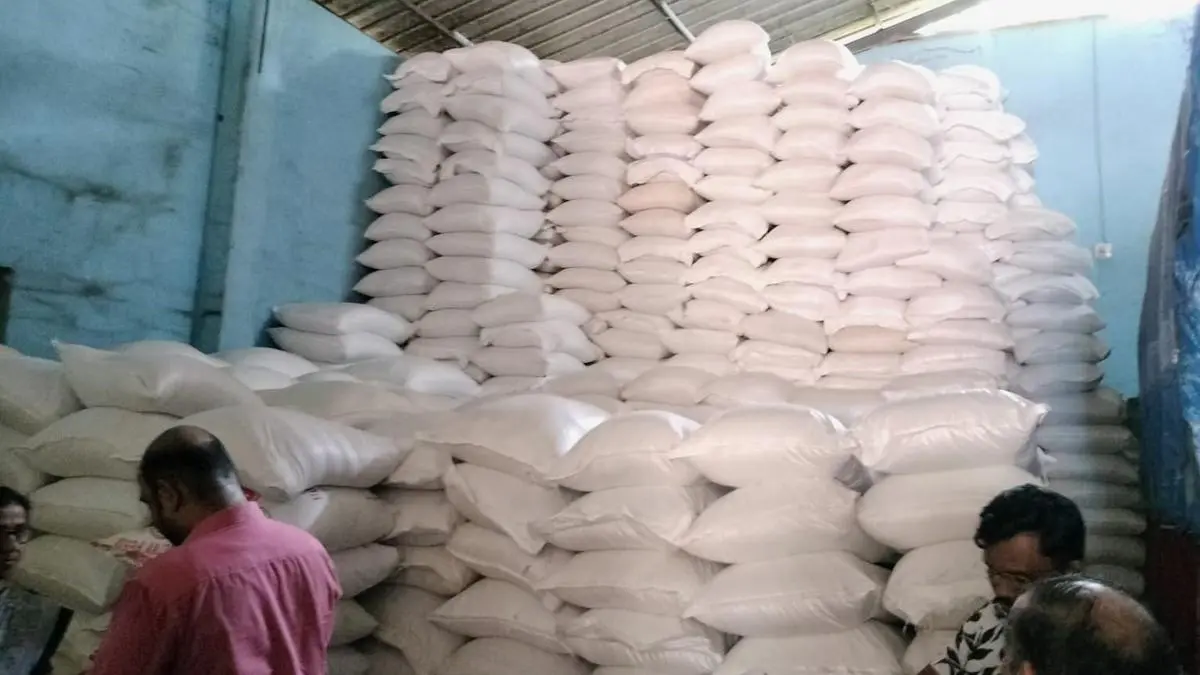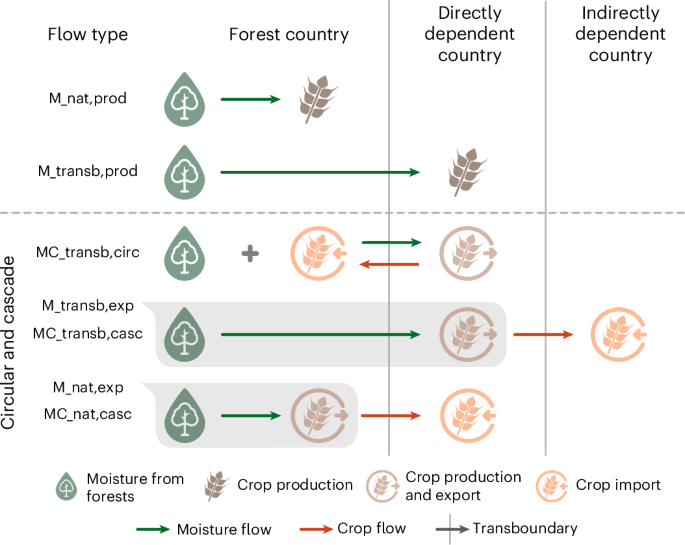Report on the New Aquatic Food Value Chains (NAVAC) Initiative
Introduction and Strategic Partnership
The United Nations Food and Agriculture Organization (FAO) and the European Union (EU) have initiated a collaborative project, “New Aquatic Food Value Chains for Sustainable Healthy Diets in Fragile Contexts” (NAVAC). This partnership exemplifies SDG 17 (Partnerships for the Goals) by leveraging international cooperation to address critical development challenges. The initiative is designed to enhance food security and nutrition, directly contributing to SDG 2 (Zero Hunger), by improving access to safe and nutritious aquatic foods for vulnerable populations in Africa and Latin America.
Project Scope and Core Objectives
The NAVAC project will be implemented from 2025 to 2030, targeting communities in several key countries. Its primary objectives are deeply rooted in the Sustainable Development Goals framework.
Geographical Focus
- Chad
- Colombia
- Guinea-Bissau
- Mauritania
- South Sudan
Alignment with Sustainable Development Goals (SDGs)
The initiative’s main purpose is to expand the supply of sustainable and affordable aquatic foods, with a focus on reaching nutritionally vulnerable groups. This directly supports several SDGs:
- SDG 2 (Zero Hunger): By providing an essential source of protein and micronutrients, the project aims to combat malnutrition, particularly among children and pregnant and lactating women.
- SDG 3 (Good Health and Well-being): Aquatic foods, rich in omega-3 fatty acids, iron, and zinc, are vital for human health and can lower the risk of non-communicable diseases.
- SDG 1 (No Poverty) & SDG 8 (Decent Work and Economic Growth): NAVAC seeks to make local economies more resilient by fostering innovation in aquatic value chains, thereby strengthening livelihoods and providing economic benefits to local communities.
- SDG 10 (Reduced Inequalities): The project’s commitment to “leaving no one behind” by specifically targeting vulnerable populations is a direct action towards reducing inequalities in access to nutrition and economic opportunity.
Implementation and Strategic Framework
The project will be implemented by the FAO and the Technical University of Denmark. The approach integrates research, innovation, and policy to create sustainable and equitable outcomes, aligning with the FAO’s “Blue Transformation” roadmap.
Methodology
- Analysis and Research: An initial analysis of aquatic food value chains in the participating countries will be conducted to identify knowledge gaps and opportunities for improvement.
- Strategy Development: Findings from the research will inform the creation of targeted strategies to increase the supply of healthy aquatic foods to populations most in need.
- Technological Innovation: The project will explore advanced biotechnologies and product development processes to create efficient and sustainable solutions along the value chain, from “net to plate.”
This integrated approach supports the FAO’s “Four Betters” (Better Production, Better Nutrition, a Better Environment, and a Better Life) and the EU’s “Global Gateway” strategy, which aims to boost global supply chain security and competitiveness.
Global Context: Sustainable Marine Resource Management
The NAVAC initiative operates within a global landscape of increasing efforts to ensure the sustainable use of marine resources, a central tenet of SDG 14 (Life Below Water).
Key International Agreements and Challenges
- WTO Fisheries Subsidies Agreement: Aims to protect fish stocks by limiting subsidies that contribute to illegal, unreported, and unregulated (IUU) fishing. However, its implementation must prioritize equity for small-scale fishers to avoid disproportionately benefiting industrial fleets, a concern related to SDG 10 (Reduced Inequalities).
- IUCN Motion 032: A global agreement to end destructive fishing practices like bottom trawling and protect deep-sea habitats and biodiversity hotspots.
- UN High Seas Treaty: Set to become operational in 2026, this treaty will protect marine biodiversity in international waters.
A critical challenge in achieving SDG 14 and SDG 2 simultaneously is the trade-off between using small, nutrient-rich fish for local human consumption versus diverting them to feed for aquaculture production. Ensuring fair access and nutrition-sensitive policies is essential for balancing local needs with global sustainability objectives.
Analysis of Sustainable Development Goals in the Article
1. Which SDGs are addressed or connected to the issues highlighted in the article?
-
SDG 2: Zero Hunger
- The article’s central theme is the NAVAC initiative, which aims to “increase access to safe and nutritious aquatic foods for vulnerable populations” and “ensure that it reaches nutritionally vulnerable populations.” This directly addresses the goal of ending hunger and malnutrition by focusing on aquatic foods as an “essential source of protein and micronutrients for at-risk groups of malnutrition, including children and pregnant and lactating women.”
-
SDG 8: Decent Work and Economic Growth
- The initiative is designed to “make local economies more resilient” and provide “economic benefits to local communities through Blue Transformation innovations in aquatic food value chains.” This connects to promoting sustained, inclusive, and sustainable economic growth by strengthening livelihoods within the fishing sector.
-
SDG 12: Responsible Consumption and Production
- The article emphasizes making aquatic food systems “more efficient, inclusive, resilient, and sustainable.” The focus on “sustainable, affordable, safe, and nutritious aquatic foods” and developing “efficient solutions” through new technologies points towards ensuring sustainable consumption and production patterns.
-
SDG 14: Life Below Water
- A significant portion of the article discusses “Ocean protection and regulations.” It mentions specific international efforts like the “WTO Fisheries Subsidies Agreement” to protect fish stocks, the global agreement to “end the devastating bottom trawling and other destructive fishing methods,” and the “UN High Seas Treaty” to protect marine biodiversity. These actions are directly aimed at conserving and sustainably using the oceans and marine resources.
-
SDG 17: Partnerships for the Goals
- The entire NAVAC initiative is a partnership between the “UN Food and Agriculture Organization (FAO) and the EU.” The implementation involves collaboration with the “Technical University of Denmark.” The article also references other global partnerships and agreements, such as the WTO and the UN High Seas Treaty, highlighting the importance of multi-stakeholder collaboration to achieve sustainable development.
2. What specific targets under those SDGs can be identified based on the article’s content?
-
Under SDG 2 (Zero Hunger):
- Target 2.1: By 2030, end hunger and ensure access by all people, in particular the poor and people in vulnerable situations, including infants, to safe, nutritious and sufficient food all year round. The article directly supports this by aiming to “expand the supply of sustainable, affordable, safe, and nutritious aquatic foods and ensure that it reaches nutritionally vulnerable populations.”
- Target 2.2: By 2030, end all forms of malnutrition. The article highlights that aquatic foods are an “essential source of protein and micronutrients for at-risk groups of malnutrition, including children and pregnant and lactating women,” directly addressing this target.
-
Under SDG 8 (Decent Work and Economic Growth):
- Target 8.3: Promote development-oriented policies that support productive activities, decent job creation, entrepreneurship, creativity and innovation. The NAVAC initiative’s goal to “make local economies more resilient” and “strengthen livelihoods” through “innovation in aquatic value chains” aligns with this target.
-
Under SDG 12 (Responsible Consumption and Production):
- Target 12.2: By 2030, achieve the sustainable management and efficient use of natural resources. The article’s mention of FAO’s Blue Transformation roadmap to make aquatic food systems “more efficient” and “sustainable” and the examination of “new advanced biotechnologies and product development processes for efficient solutions” directly relate to this target.
-
Under SDG 14 (Life Below Water):
- Target 14.4: By 2020, effectively regulate harvesting and end overfishing, illegal, unreported and unregulated fishing and destructive fishing practices. The article discusses the “WTO Fisheries Subsidies Agreement” which aims to protect fish stocks from “illegal, unreported, and unregulated fishing” and a global agreement to end “devastating bottom trawling and other destructive fishing methods.”
- Target 14.6: By 2020, prohibit certain forms of fisheries subsidies which contribute to overcapacity and overfishing. The article explicitly mentions the “WTO Fisheries Subsidies Agreement” and its goal of “limiting subsidies” that harm fish stocks.
-
Under SDG 17 (Partnerships for the Goals):
- Target 17.16: Enhance the global partnership for sustainable development, complemented by multi-stakeholder partnerships. The collaboration between the FAO, EU, and the Technical University of Denmark to launch and implement the NAVAC initiative is a direct example of such a partnership.
3. Are there any indicators mentioned or implied in the article that can be used to measure progress towards the identified targets?
-
For SDG 2 Targets:
- An implied indicator is the prevalence of malnutrition and food insecurity among vulnerable populations (children, pregnant and lactating women) in the five participating countries (Chad, Colombia, Guinea-Bissau, Mauritania, and South Sudan). The success of the NAVAC initiative would be measured by a reduction in these rates.
-
For SDG 8 Targets:
- The article implies an indicator related to the economic resilience and income of local communities. Progress could be measured by tracking the “economic benefits” and strengthened “livelihoods” of those involved in the local aquatic food value chains.
-
For SDG 12 Targets:
- An implied indicator is the efficiency and sustainability of aquatic food value chains. The article mentions that research will “analyze aquatic food value chains” and “mark opportunities for improvement,” suggesting that progress would be measured by the adoption of “advanced biotechnologies” and more “efficient solutions” from ‘net to plate.’
-
For SDG 14 Targets:
- The article mentions a direct indicator: the implementation and enforcement of international agreements. This includes the “WTO Fisheries Subsidies Agreement” to limit harmful subsidies and the global agreement to end “bottom trawling and other destructive fishing methods.” Progress is measured by the degree to which governments and industries adhere to these regulations.
-
For SDG 17 Targets:
- A clear indicator is the existence and operational status of multi-stakeholder partnerships. The launch of the NAVAC initiative itself, a collaboration between the FAO and the EU running from 2025 to 2030, serves as a primary indicator of this target being met.
4. Table of SDGs, Targets, and Indicators
| SDGs | Targets | Indicators |
|---|---|---|
| SDG 2: Zero Hunger | 2.1: End hunger and ensure access to safe, nutritious food. 2.2: End all forms of malnutrition. |
Implied: Reduced prevalence of malnutrition and food insecurity in vulnerable populations in the five target countries. |
| SDG 8: Decent Work and Economic Growth | 8.3: Promote development-oriented policies that support productive activities and decent job creation. | Implied: Increase in economic benefits and strengthened livelihoods for local fishing communities. |
| SDG 12: Responsible Consumption and Production | 12.2: Achieve the sustainable management and efficient use of natural resources. | Implied: Measured improvements in the efficiency and sustainability of aquatic food value chains through innovation and technology. |
| SDG 14: Life Below Water | 14.4: End overfishing, IUU fishing, and destructive fishing practices. 14.6: Prohibit harmful fisheries subsidies. |
Mentioned: Implementation of the WTO Fisheries Subsidies Agreement and global agreements to end destructive practices like bottom trawling. |
| SDG 17: Partnerships for the Goals | 17.16: Enhance the global partnership for sustainable development. | Mentioned: The establishment and operation of the NAVAC partnership between the FAO, EU, and the Technical University of Denmark. |
Source: nutritioninsight.com







